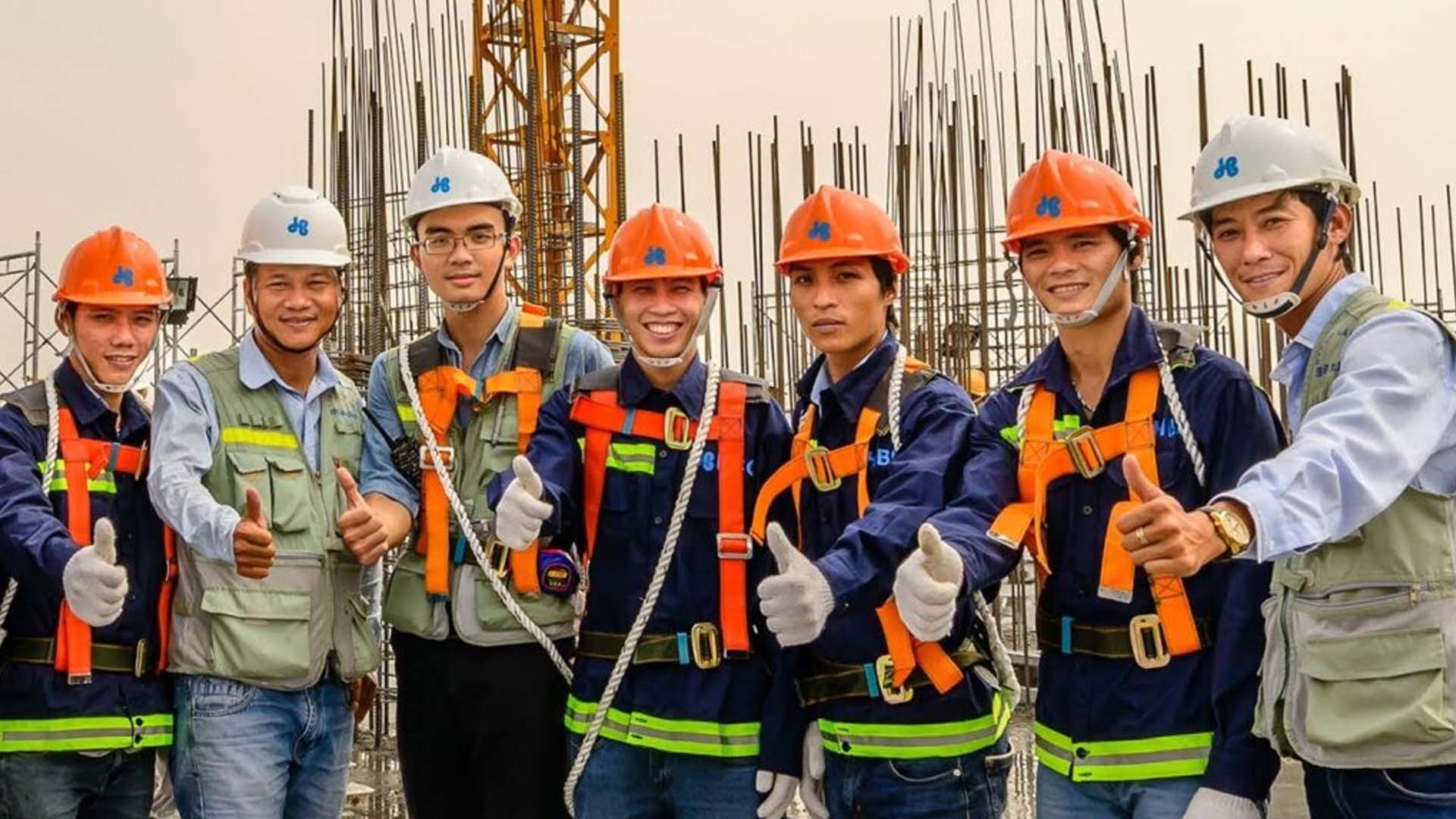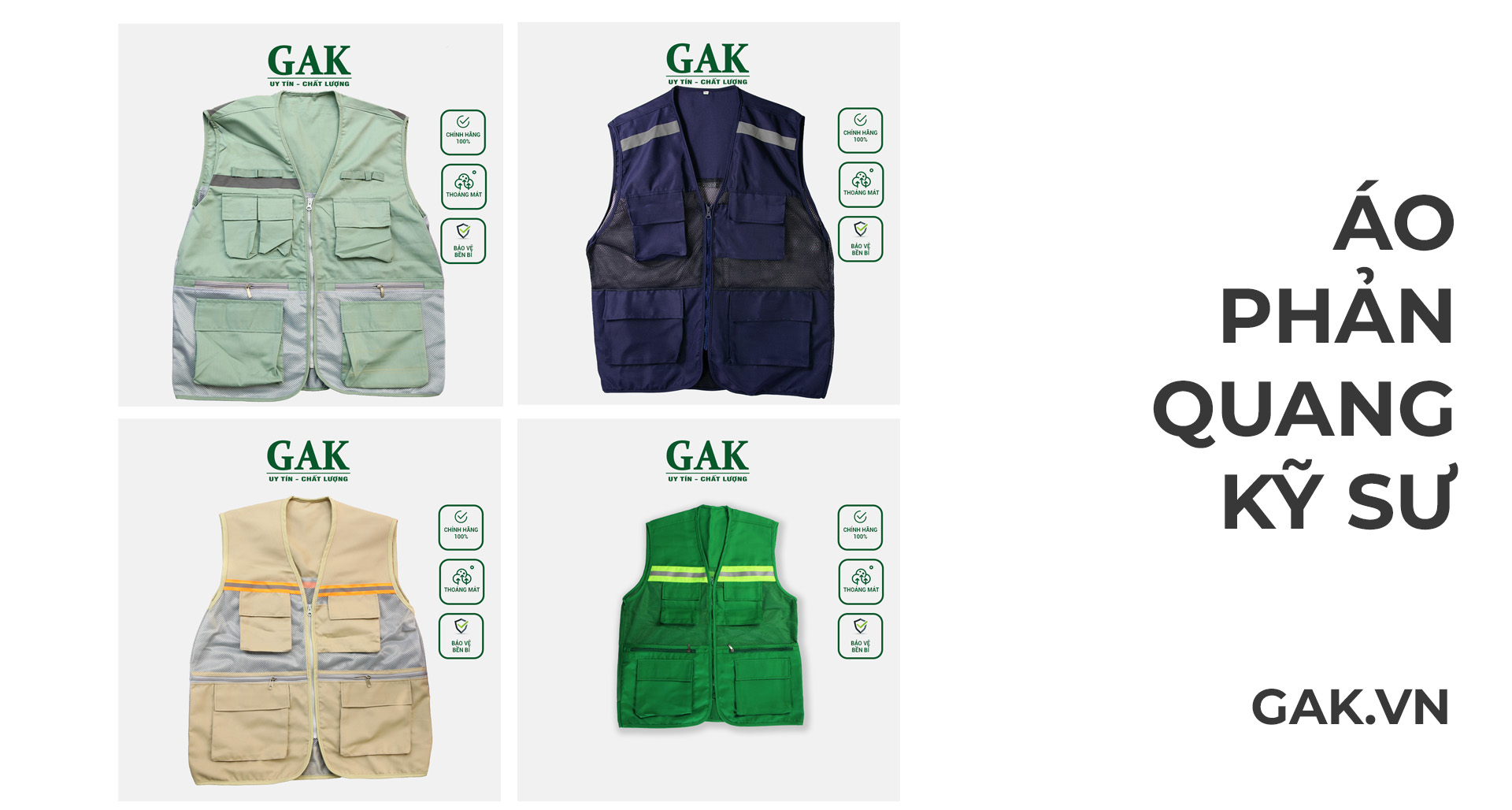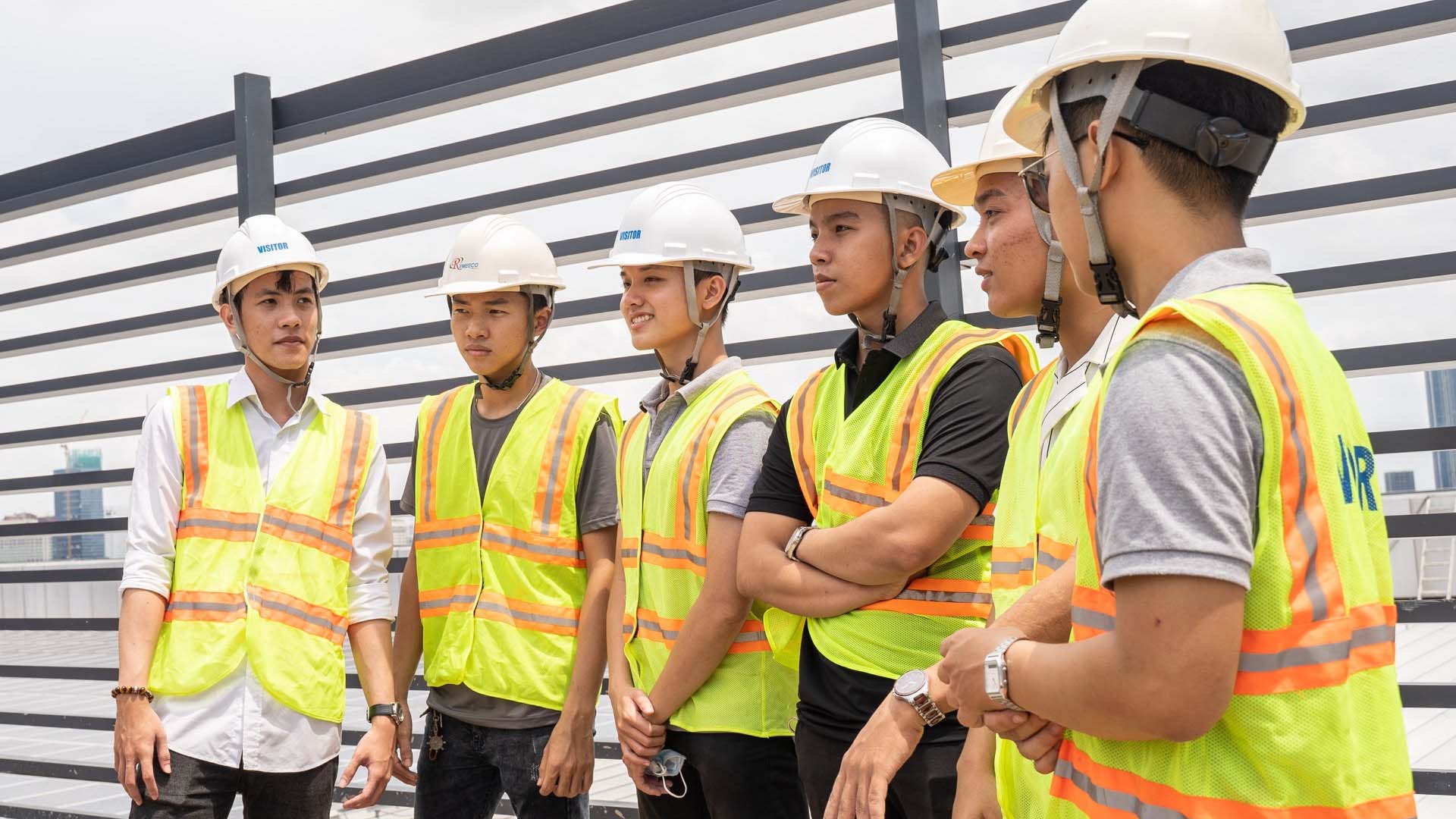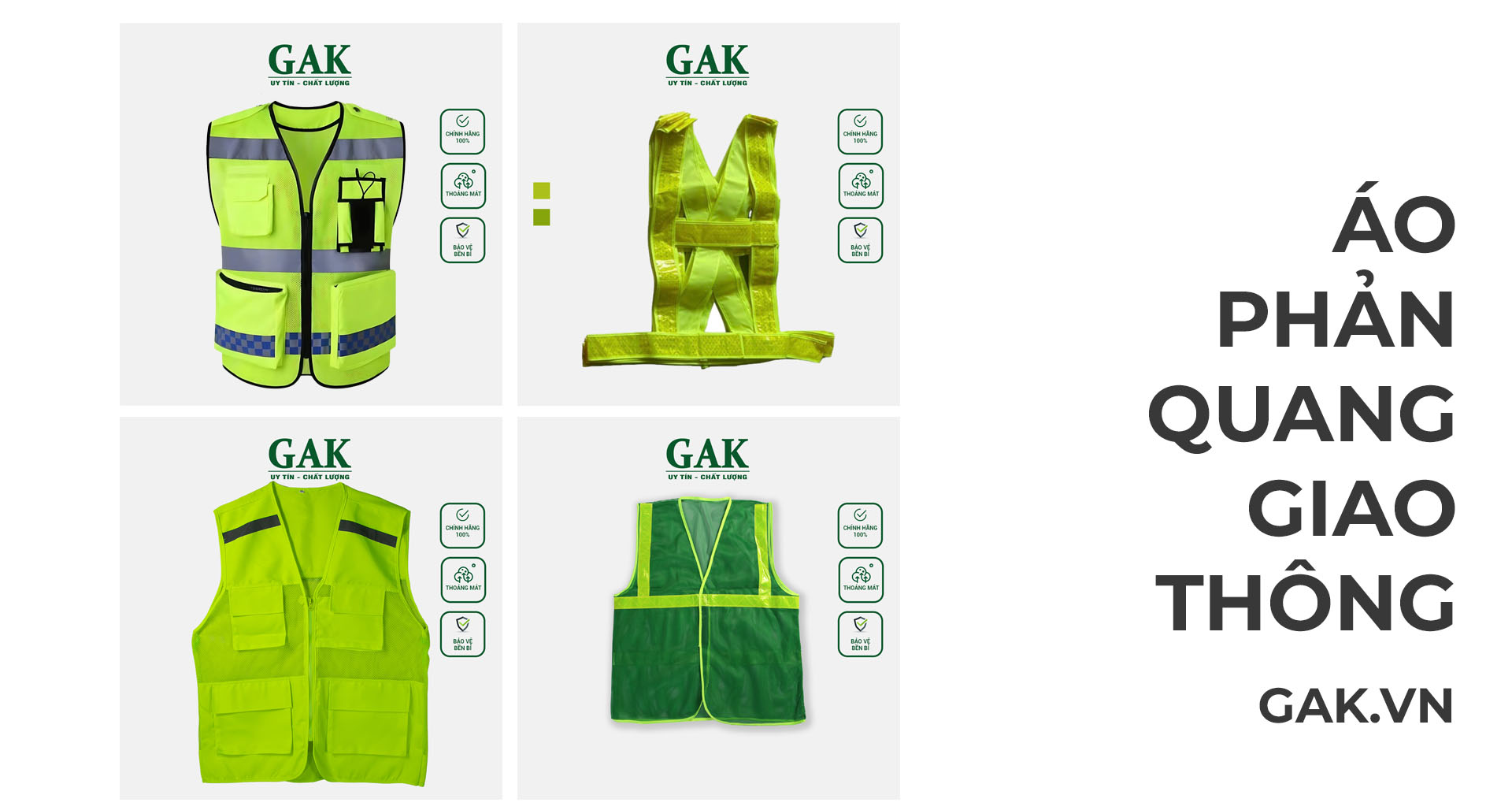How to distinguish reflective vests for engineers, traffic and workers?
Reflective safety vests are among the most essential types of personal protective equipment (PPE) across many industries. But do you know how to tell the difference between engineer, traffic, and construction worker reflective vests? Let GAK guide you through the key distinctions in this article.
1. Engineer Reflective Vests

What is an engineer reflective vest?
This type of vest is designed for technical personnel in the workplace, such as engineers, site supervisors, safety officers, project managers, or even directors. It provides both a professional appearance and essential visibility.
Key features of engineer reflective vests:
- Design: Vest or jacket style with multiple utility pockets for pens, documents, or phones.
- Material: Durable fabrics like Kaki, Kate, or 2/1 twill Kaki to ensure structure and professionalism.
- Colors: Neutral tones such as gray, navy blue, or black – reflecting authority and expertise.
- Reflective tapes: High-quality reflective bands usually positioned across the chest, shoulders, and back.
- Primary function: Denote leadership roles while ensuring visibility and safety on-site.
Common styles:

Multi-pocket engineer vests with wide reflective stripes, sturdy stitching, and ID tag holders.
See also:
- What is the function of reflective safety vests?
- How to protect workers at heights – safety principles you must know.
- Why are reflective vests necessary in warehouses?
2. Construction Worker Reflective Vests

These vests are widely used across job sites and factories. They’re cost-effective and designed to increase visibility for laborers during machinery operation or site work, typically worn for 8 to 12 hours daily.
Key features of construction worker vests:
- Design: Simple T-shirt, jacket, or vest form for ease of wear.
- Material: Lightweight mesh, poly-cotton, or Kaki for breathability and comfort.
- Colors: High-visibility shades such as fluorescent orange, neon green, or lime yellow.
- Reflective tapes: Standard horizontal strips around the chest and back for nighttime visibility.
- Primary function: Improve worker recognition in busy or hazardous environments.
Common styles:
Mesh vests with 2-inch reflective tapes and bright color schemes.

See also:
- What are airport reflective vests and why are they used in ground handling?
- Why are reflective vests essential in warehouses and distribution centers?
- Why construction sites require reflective gear?
3. Traffic Reflective Vests
Designed for individuals working directly on or near roadways—traffic controllers, public safety officers, airport personnel, and road maintenance workers. These vests enhance visibility in crowded, fast-moving environments to prevent accidents.
Key features of traffic reflective vests:
- Design: Rain jackets or mesh vests, often labeled with roles like “TRAFFIC CONTROL” or “SECURITY”.
- Material: Waterproof fabrics like coated polyester or PVC to suit all-weather conditions.
- Colors: Extremely high-visibility tones—bright orange, lime yellow, or red.
- Reflective tapes: Wide, high-intensity reflective bands, sometimes along sleeves and vest edges.
- Primary function: Ensure visibility from a distance, especially at night or in low light conditions.
Common styles:

LED-lit or high-contrast vests with printed role identifiers, used by traffic police or emergency responders.
See also:
- What are traffic reflective vests? Why are they essential for nighttime road users?
- How do reflective vests work?
- Which jobs require reflective PPE?
- Reflective clothing vocabulary in English
4. Quick Comparison Table
| Vest Type | Target Users | Main Colors | Style | Reflective Detail | Fabric Type |
|---|---|---|---|---|---|
| Engineer | Supervisors, Engineers | Gray, Navy, Black | Vest or Jacket | Premium, professional bands | Kaki, Kate, Twill |
| Worker | General Laborers | Orange, Neon Green | Simple T-shirt/Vest | Basic, wide strips | Mesh, Lightweight Kaki |
| Traffic | Controllers, Security Staff | Yellow, Orange, Red | Raincoat or Vest | Extra-wide, highly visible | Waterproof materials |
This guide has outlined how to distinguish between various types of reflective safety vests based on their design, materials, and application. For high-quality, custom-designed safety wear, contact GAKVN today for consultation and competitive pricing.



